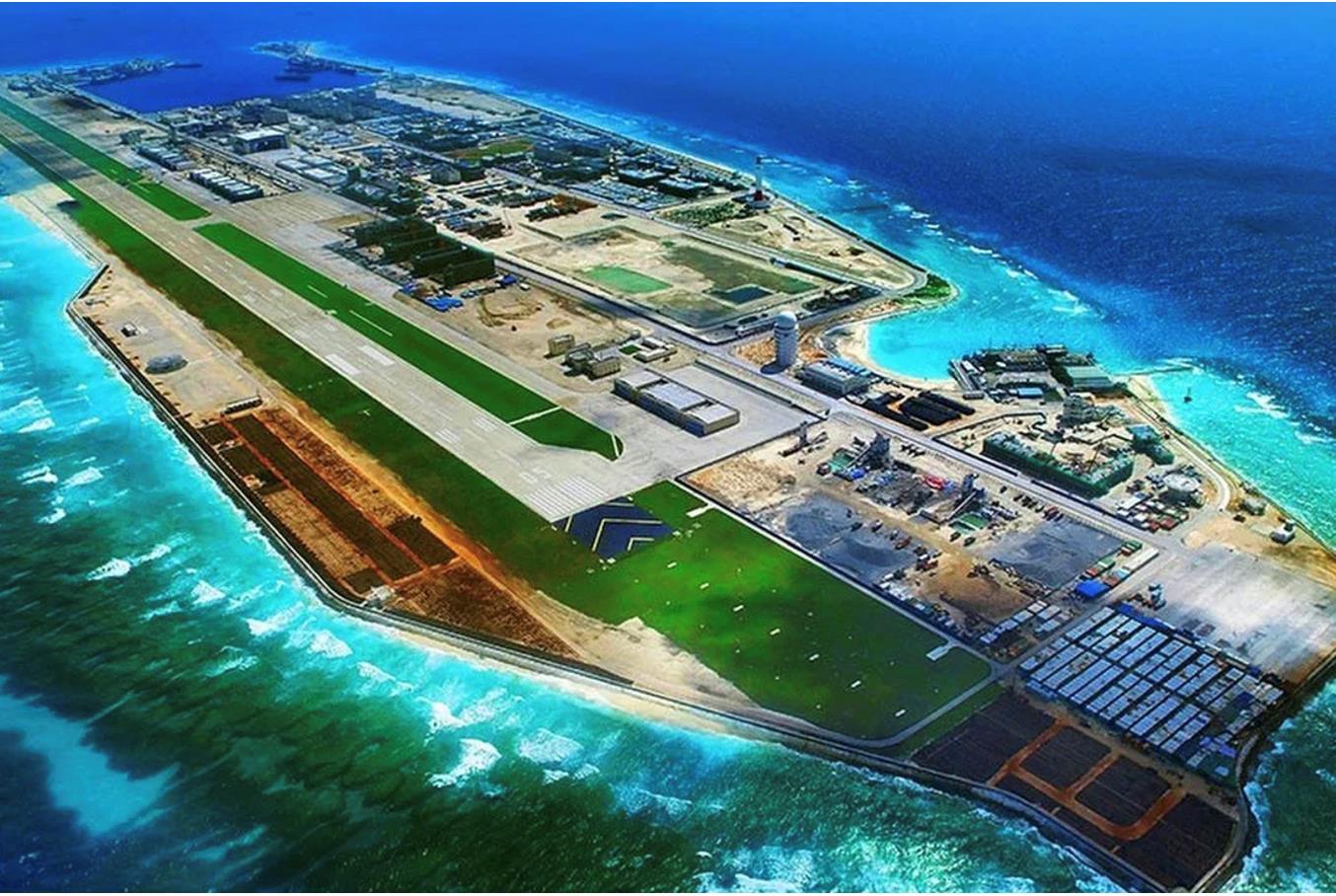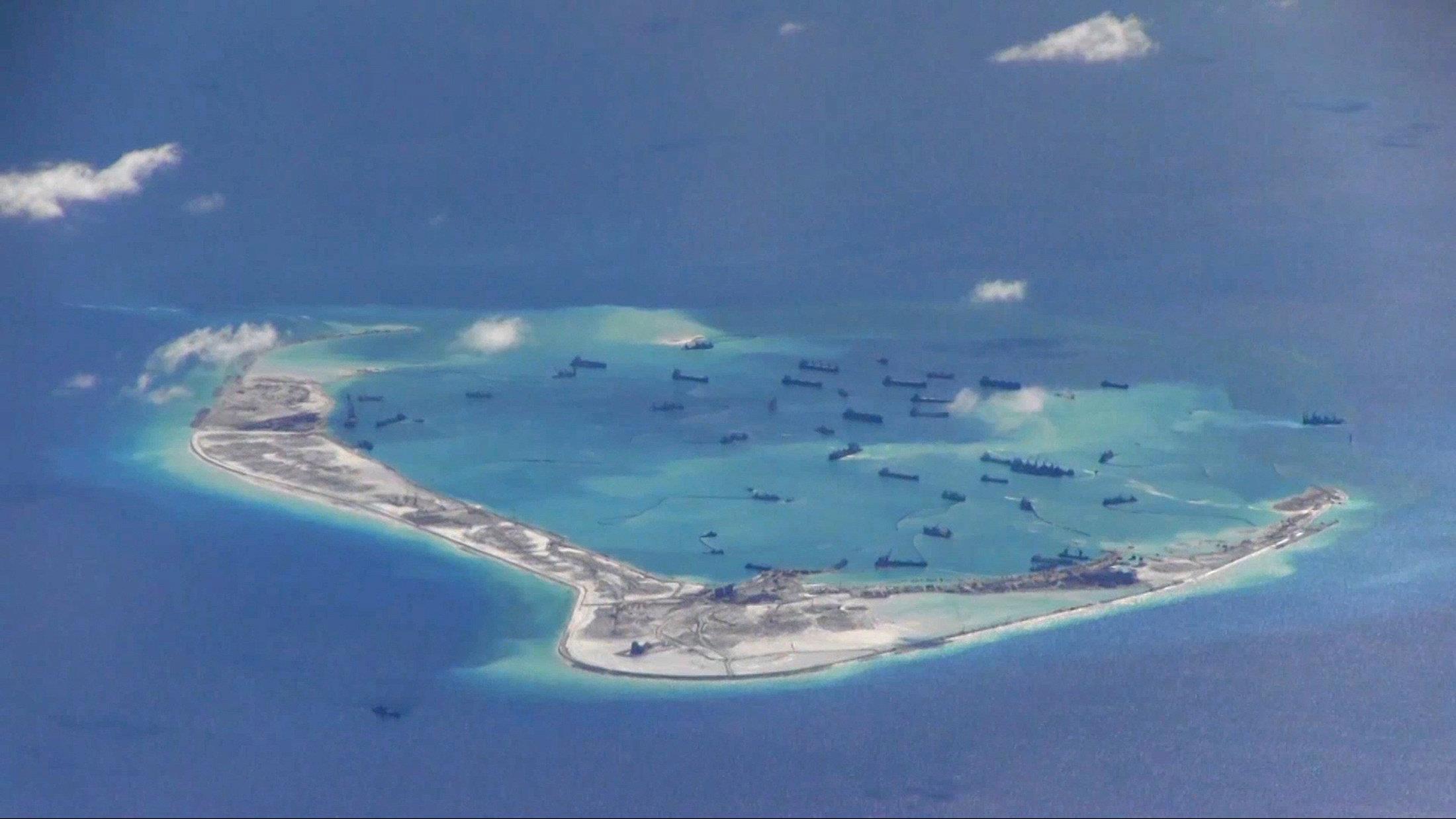(MENAFN- Asia Times) China has unveiled plans to build a supersized sand dredging vessel, a harbinger of increased grey zone warfare against Taiwan and more militarized island-building in the South China Sea.
this week, south china morning post (scmp) reported that China is developing a“super-dredger” that will be 50% more powerful than its present“super island builder.”
A dredger is a vessel that can tear up riverbeds or the seabed with a drill-like reamer device, sucking up sand and rocks and then pumping them through a pipe over a distance. Such vessels are useful for clearing navigation waterways and building artificial islands.
SCMP says that the new suction dredger will feature a 10,000-kilowatt reamer, which will reportedly be the largest in the world, exceeding the power of the 6,600 kilowatts of the Tian Kun, which was commissioned in 2019, and the 4,400 kilowatts of the Tian Jing, which in 2013 and 2014 was the main vessel involved in China's controversial island-building in the contested South China Sea.
“The development of the new vessel is not just a simple enlargement in terms of reamer power, hull size, etc, but a qualitative leap forward,” said Qin Bin, chief engineer of the Tianjin Waterway Bureau that operates the Tian Kun and Tian Jing.
The unveiling of China's supersized sand dredger may presage an escalation of its island-building activities in its gray zone operations against Taiwan and the South China Sea.

The China-occupied Fiery Cross Reef in the South China Sea. Image: People's Daily
in a july 2022 article for foreign policy , Elizabeth Braw mentions that China uses sand dredging operations to impose huge costs on Taiwan, forcing the self-governing island to divert more resources to its Coast Guard rather than the military.
Braw notes that Taiwan's Coast Guard expelled 4,000 Chinese sand dredgers and sand-transporting vessels from its waters in 2020, a 560% leap in incursions from 2019. Braw characterizes the move as an example of China's gray zone warfare, which is non-military and not big enough to provoke a military response but is nonetheless damaging.
a february 2021 reuters report mentions that China's ongoing sand dredging activities around Taiwan have forced the latter's Coast Guard to do round-the-clock patrols to drive out the former's vessels. The report said the vessels potentially damage undersea internet cables, intimidate residents and tourists, and inflict maritime environmental damage including to fishing livelihoods.
The report also mentions that sand dredging, as part of China's maritime gray zone strategy, intends to wear down Taiwan's will to resist, deplete its limited resources and normalize such activities in the international community. It also says that China's sand dredging is part of its psychological warfare against Taiwan, similar to its fighter jets' regular incursions into the latter's airspace.
In the South China Sea, China's sand dredging activities are inextricably linked with its island-building activities, which aim to achieve strategic advantages.
in a 2021 thesis for the university of southern maine , Steven Roy says that China's island-building aims to increase its military and international trade advantages to control the South China Sea.
Roy mentions that China's artificial islands capable of hosting military installations allow it to project force throughout the region. He says China has six features that house or can house military personnel and facilities, namely at Fiery Cross Reef, Cuarteron Reef, Johnson South Reef, Mischief Reef, Subi Reef and Gaven Reef.
Roy also states that China's island-building activities have negatively impacted the coastal line sovereignty of regional states, as it insists that its artificial islands are entitled to have a 12-nautical mile territorial sea as stipulated in the United Nations Convention on the Law of the Sea (UNCLOS).
This situation, Roy notes, has sparked concerns in other claimant states such as Brunei, Indonesia, Malaysia, the Philippines, and Vietnam.
China's island-building activities in the South China Sea have been dubbed as a“Great Wall of Sand” by retired US Navy Admiral Harry Harris Jr, who said in a 2015 speech that China is engaged in“unprecedented land reclamation... pumping sand onto live coral reefs - some of them submerged - and paving them over with concrete,” as quoted by the washington post .
“China has now created over four-square kilometers of artificial landmass,” Harris said, adding that“China is creating a 'Great Wall of Sand', with dredges and bulldozers, over the course of months.”

Chinese vessels in waters around Mischief Reef in the disputed Spratly Islands in the South China Sea in this still image from video taken by a P-8A Poseidon surveillance aircraft provided by the United States Navy May 21, 2015. US Navy / Handout
Marie-Alice McLean-Dreyfus writes in an april 2016 article for the lowy institute that China's“Great Wall of Sand” parallels the Great Wall of China because the latter failed in its original purpose to keep nomadic invaders away.
McLean-Dreyfus mentions that although China's island-building activities showcase its massive economic and military might, it might also be symptomatic of internal insecurity. She notes that island-building may be a much more costly alternative to other solutions to keep out external threats, such as trade and diplomatic engagement.
McLean-Dreyfus notes that despite China's determined island-building efforts to keep other claimant states at bay, rival have has still found ways to enforce their claims, as seen in the Philippines taking China to the Permanent Court of Arbitration (PCA) and winning its case and more recently allowing the US increased access to more of its military facilities.
In line with Roy's statements, McLean-Dreyfus says that the“Great Wall of Sand” can backfire, making regional states more aggressive in pushing their territorial claims, leading to an arms race in Asia.